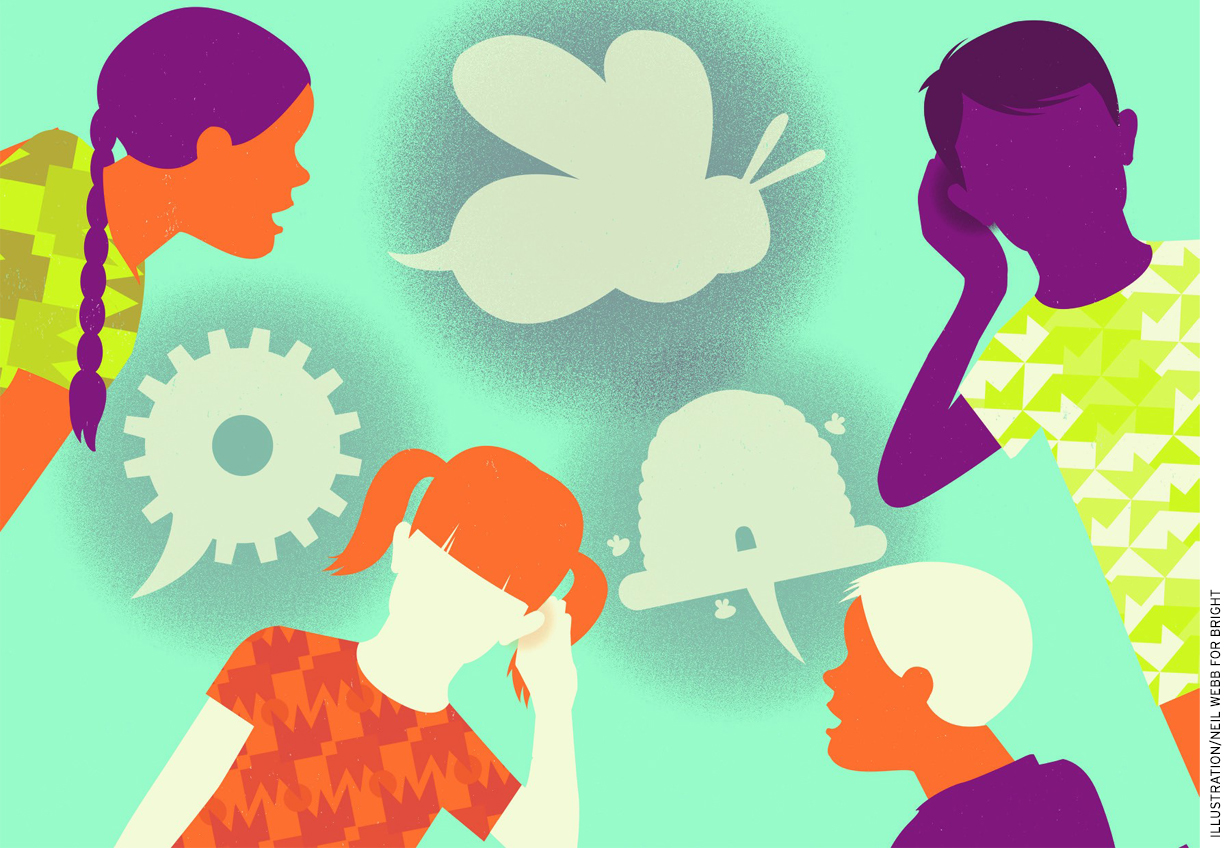
The hardest thing about being on a third-grade robotics team isn’t programming. It’s not design. And it’s certainly not building. (Eight-year-olds are already great at that.)
The biggest challenge, the No. 1 hardest-to-actually-pull-off expectation, is listening. And not just regular, “Did you hear me, I asked you to put your shoes on,” listening. Intense, active, inquisitive listening — the kind of listening that means you really hear and understand what someone is saying, you can ask a smart question about what they said and you are ready to apply what you learned from hearing them say it.
This came as a complete surprise to me after I volunteered to help my son’s elementary school robotics team this year. I decided to help coach because I’d been concerned for a while that he wasn’t getting enough time during the school day to fully explore STEM — science, technology, engineering and math.
Plus, it sounded like fun. My son liked playing with all sorts of building toys — and truth be told, so did I. At home, we had completed several complicated kits, with customized pieces, moving parts and the sort of strict instructions that drive old-school, open-ended building fans crazy.
It was hard. Not because of robotics — that part was a snap — but because we had to do it as a team. It’s one thing to help one child complete a complex set of building instructions; quite another to help six children work cooperatively to solve a common building challenge. Forget STEM, this was a master class in interpersonal dynamics.
And working on those dynamics was part of the goal. We had joined a competition that prized evidence of a healthy team alongside evidence of killer engineering, because to be a successful scientist, you’ve got to work with other scientists — the problems engineers try to solve are too complex for any one person. On competition day, you might have the best project, but if the judges see your teammates treating one another with disdain or trash-talking the competition, or even just falling short of their high standards for stopping-and-helping-Grandma-cross-the-street behavior, you could lose points and miss out on the grand prize.
So, before we got to science we had to learn to be nice. It was months before we built a thing.
We coaches read up on a set of core “gracious professionalism” values in the competition we’d chosen, First® LEGO® League Jr., and broke them into tangible do’s and don’ts. It all came down to listening: Do look at your teammate when she or he is speaking. Don’t touch any building bricks while anyone is talking. Do ask questions. Don’t interrupt. And especially, don’t call anyone’s idea “stupid.”
It seems simple, but remembering these small, constant acts of respect at 4 p.m. after a long school day wasn’t easy. But as we undertook the work of our project, it was easy to see how good listening paid off.
* * *
Our challenge was to learn about bees and present a solution to their problems. Our team of six was given the task of building a motorized bee habitat, including a feature that would warn off a predator, and giving a presentation about what they built. From my coaching perch, I could see that the robotics aspect was a means to the greater end: sorting through a lot of information and developing a finite engineering project was the actual challenge of the competition.
Bees can live in lots of different types of places, and they face myriad threats, from pesticides to predators to stressful farming practices. The possibilities were almost endless.
So our team of six became three groups of two, to take on research, assemble materials and prepare questions for a video interview with an apiarist. The researchers learned about a bee predator called the honey badger, which is ferocious but cannot jump. The materials crew got the right blocks together to build a model of an elevated hive, to ward off the badger. And on the day of the interview, everyone remembered to speak loudly and clearly as they asked the commercial apiarist questions and took notes about pesticides, mites and the importance of diverse pollen sources. Our model bloomed with organic flowers and vines of all kinds, to ensure our motorized robot bee had plenty of plants to pollinate.
On competition day, the kids donned miniature lab coats featuring a kid-designed, bee-inspired logo, quietly carried their presentation poster, laptops and robots into the judges’ room, and held forth, one at a time, on bees and colony collapse disorder. They were prepared, they were polite and they emerged the big winners, earning a “Best in Show” award.
Good scientists debrief — another one of those working-together skills — so our team did, too. After the competition we met one last time, ate some celebratory cupcakes, and shared the pros and cons of our robotics team adventure. What did we do well? What could we have done better?
And what was the best part of robotics team? While pretty much everyone agreed on “winning,” the second-place finisher was a surprise: interviewing the beekeeper. “That was the best,” one teammate said, “because we got to listen to him talk about his bees, and we learned so much.”
— Kathleen Carroll
Kathleen Carroll is an independent writer specializing in education and manuscript editor at Education Next. This originally appeared in Bright magazine.


